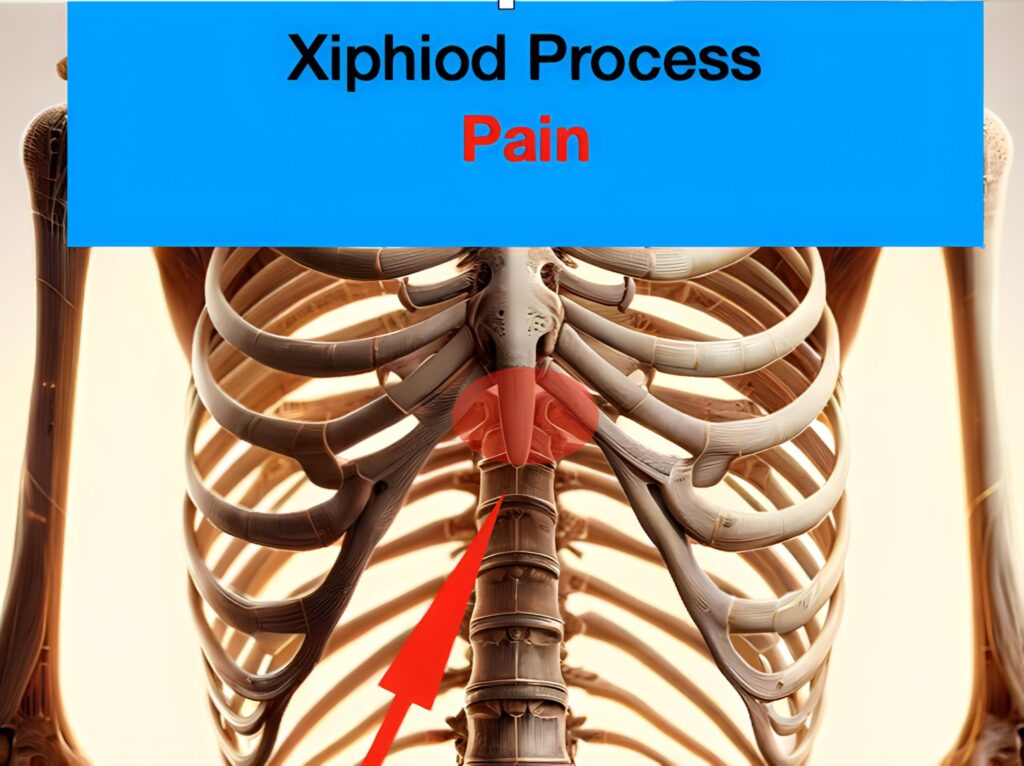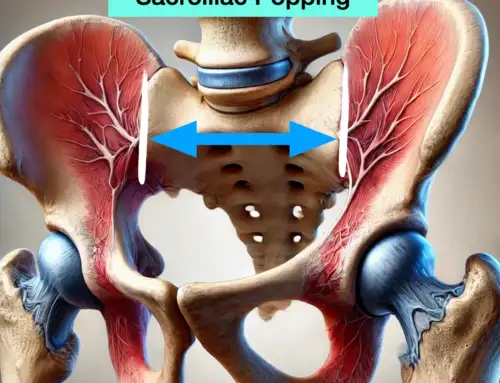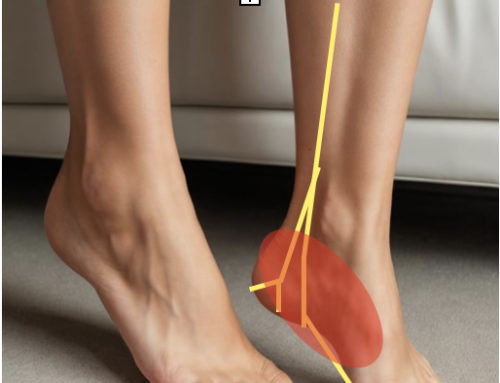Xiphoid Process Pain Relief

Various factors, such as trauma or inflammation, can cause pain during the xiphoid process. It’s essential to consult a healthcare professional for proper diagnosis and treatment. Avoid self-diagnosis and seek medical advice for persistent discomfort.
As a seasoned chiropractor, I have treated numerous patients grappling with pain over the xiphiod process. The xiphoid process, a small cartilaginous extension at the base of the sternum (breastbone), plays a crucial role in anchoring various chest muscles and ligaments. pain over the xiphiod process
Pain in this area can stem from diverse sources such as trauma, inflammation, musculoskeletal conditions like costochondritis, or gastrointestinal issues, including acid reflux and indigestion.
Symptoms range from mild discomfort to severe aches, often manifesting as deep sternal tenderness or sharp pains exacerbated by movement. Swelling and soreness may also accompany these sensations. They are often associated with rib cage, thoracic cavity, and abdominal pain.
This syndrome is also known as xiphoidalgia.
Causes of a Painful Xiphoid Process
- Too much pressure on the xiphoid during emergency cardiopulmonary resuscitation (CPR) during a suspected myocardial infarction (heart attack) causes injury.
- Lifting heavy weight in a repetitive fashion
- Tightness is the supporting muscle and ligaments around the xiphoid.
- It may occur at the same time as costochondritis.
Diagnosing Xiphoidalgia
Diagnosing pain in the xiphoid process requires professional medical evaluation. A healthcare provider will conduct a comprehensive physical examination and review your medical history to pinpoint potential causes for your symptoms.
Diagnostic procedures like X-rays or CT scans are commonly employed to assess structural abnormalities in the chest region. Accurate diagnosis is paramount due to overlapping symptoms with conditions like angina pectoris, gallbladder disease, pancreatitis, or certain cancers.
Palpation by an experienced doctor can evaluate relevant anatomy to tender muscular contributions in the rib cage and assess sternal angle and nerve entrapment complications.
Treatment for Pain in the Xiphoid Process
Treatment options encompass non-surgical interventions as initial steps:
- Medication: Over-the-counter NSAIDs such as ibuprofen can mitigate inflammation and alleviate pain.
- Physical therapy: Skilled therapists offer exercises to enhance posture, strengthen chest muscles, and foster healing processes.
Visceral Manipulation of the diaphragm, stomach, and ligaments in the abdomen can be a helpful treatment for symptom relief symptom modification.
Manual therapy to the rib cage, rectus abominus, and joint pumping of the ribs can help in the rehabilitation process.
Surgical intervention might be warranted if conservative measures prove ineffective or underlying conditions mandate surgical management – involving cartilage removal or addressing contributing structural anomalies. Usually, surgery is an uncommon result after failed conservative care.
Consult your doctor immediately if you have chest pain.
Choosing the Right Treatment for Xiphoidalgia
Selecting the optimal treatment for your xiphoid process pain requires careful consideration of various factors. Assessing pain severity, identifying underlying causes, considering potential outcomes and recovery times, evaluating lifestyle impact, and factoring in personal preferences are essential in making an informed decision.
Living with Xiphiod Process Pain: Tips and Strategies
Living with pain in the xiphoid process can present challenges, but there are effective strategies to help alleviate symptoms and enhance your quality of life. Lifestyle adjustments, regular consultations with healthcare professionals, and coping mechanisms for chronic pain management can significantly contribute to managing a painful xiphiod
Prevention: Proactive Measures
To effectively manage and prevent xiphoid process discomfort, taking proactive steps is essential. Regular exercise, maintaining a healthy weight, minding your posture, avoiding heavy lifting, practicing stress management techniques, and following a balanced diet are crucial preventive measures.
Remember, prevention is critical when it comes to managing pain in the xiphiod. By implementing these proactive measures and seeking guidance from healthcare professionals, you can minimize the risk of discomfort while promoting overall musculoskeletal health.
Remember that this guide serves informational purposes only; consult healthcare professionals for accurate diagnosis and personalized treatment plans tailored to your unique requirements.
Reach out to book with Dr. Dean by texting or calling 323-354-6077 or email him at drjustindean@gmail.com
Our editorial process includes evidence-based practices, interventions, and recommendations.





